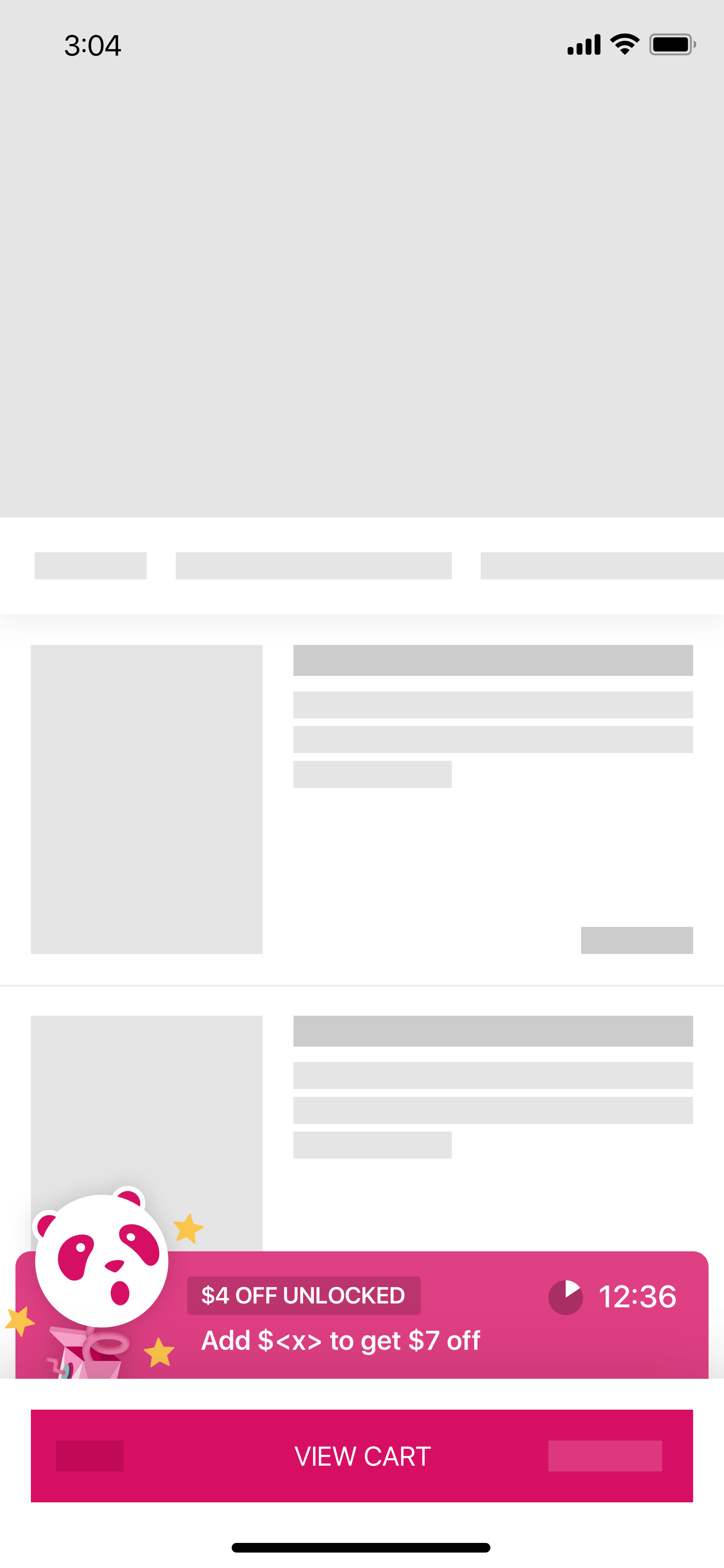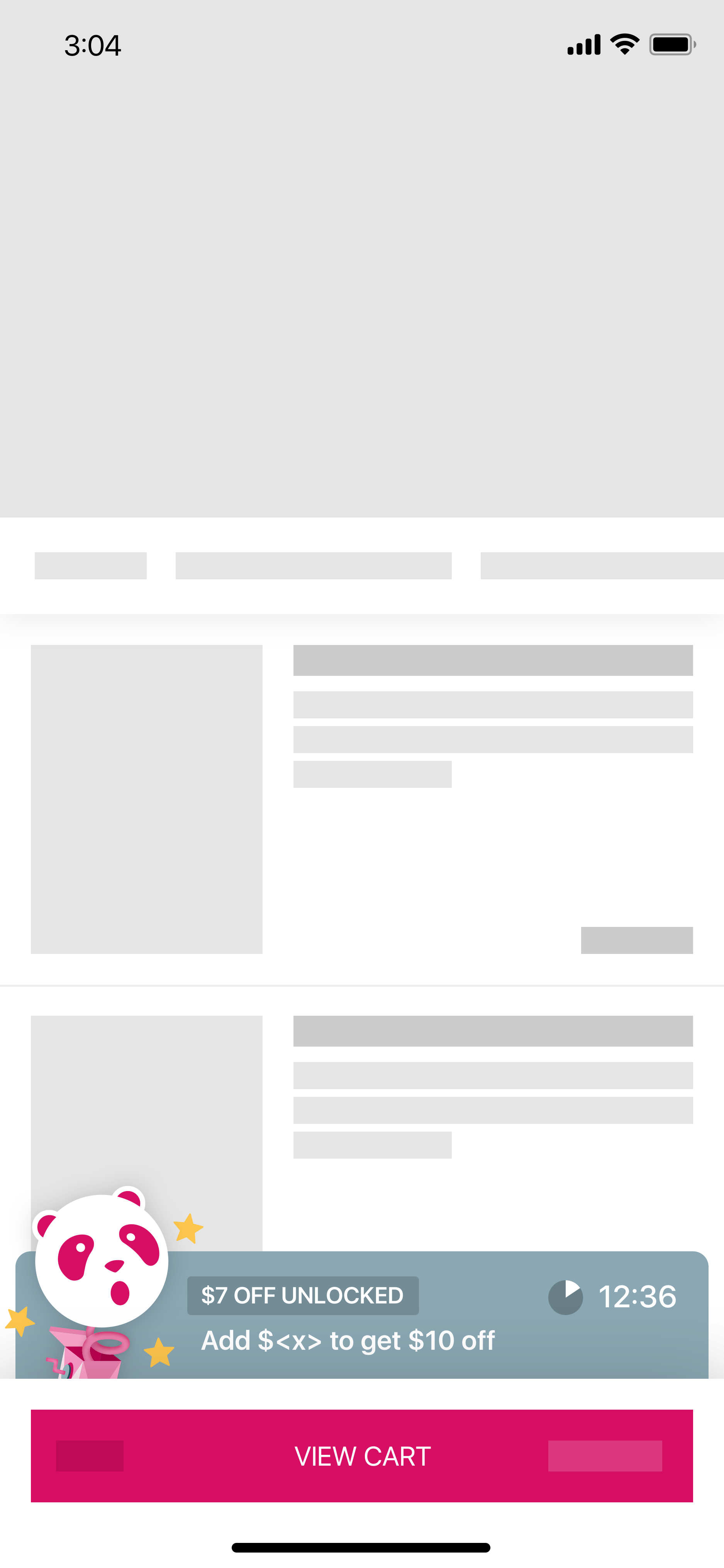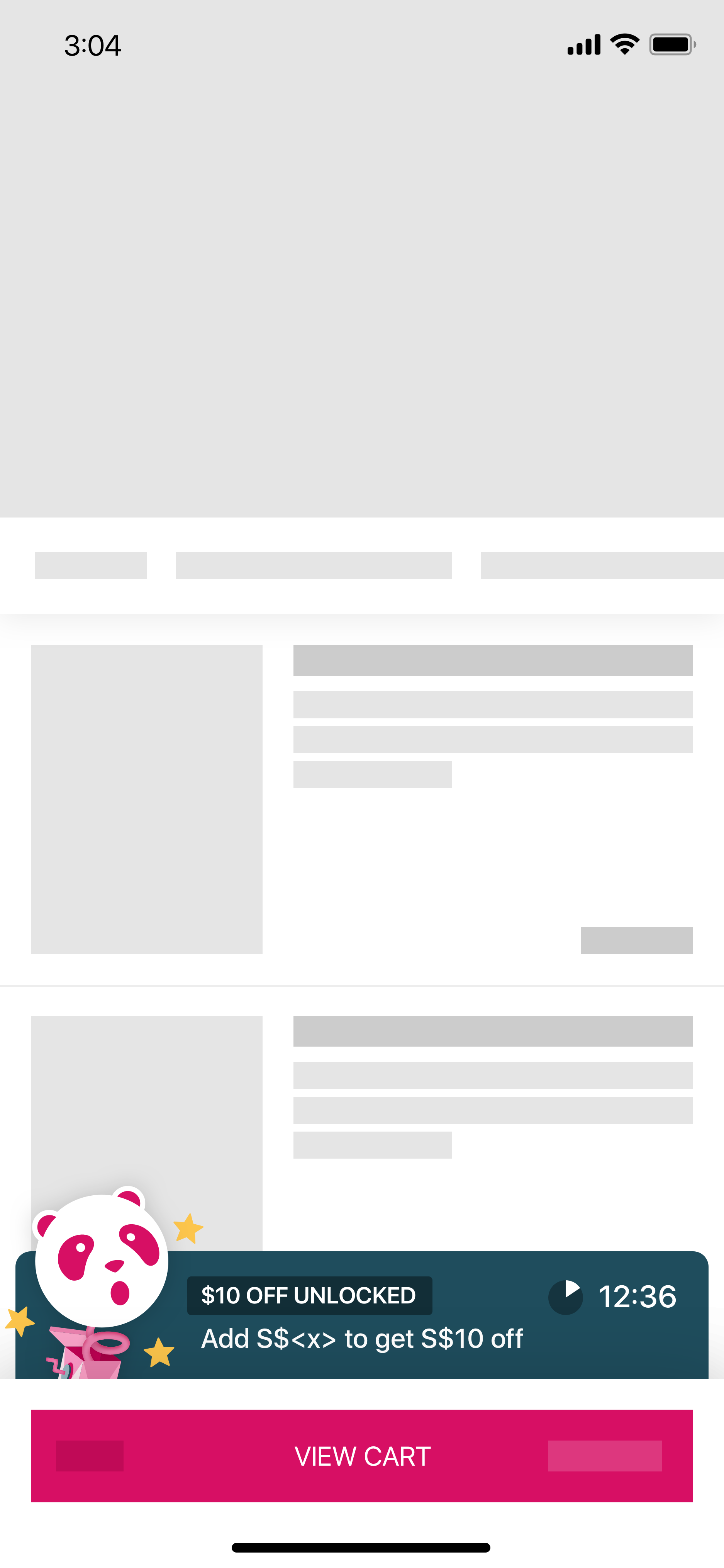Creating a time-limited offer
background
Panda box is a popup offer that comes with tiered discounts. It was such a successful project for other business entities in Delivery Hero that we adopted the concept for Foodpanda. The problem is, the existing designs were very much localized to their markets. We had to balance between keeping the parts that performed well and changing the rest for our markets.
the Copy
Introduction
Addressing users by name conveys the message that this offer is for them and not just a random popup. Then, I introduced the unlocking concept and value proposition.
How it works
It was difficult narrowing down to three clear steps to take, especially with the limited space given. After several rounds of alignment with stakeholders, I finally whittled down to these points: users can’t go back after choosing a restaurant, how to unlock the discounts, complete the order within the given time.
call to action
With so much information to digest in such a short time, I wanted to help users take the first step with just one simple action. If they missed everything else, this would be the safety net to catch them and move them along.
unlocking discounts
As users pick their dishes, the status bar shows how much they have unlocked and how far they are to the next tier, serving as both a reminder and motivation.
when users exit the flow
We needed to make it clear that the discounts will be gone once they leave. This message warns them about this and persuades them to continue with their order.
when users run out of time
This message has to apply for users that almost completed their orders and those that haven’t started ordering. To keep them going without discounts, only one button is shown.
In retrospect
Thanks to the local teams, I had lots of great insights into what would (and wouldn’t) work for each market. I got to understand the users’ mental models, how different markets react differently to the same content, and the keywords that would catch their attention. From there, I came to a happy medium that would work across these differences. I’ll be updating on the impact once I get the numbers.













